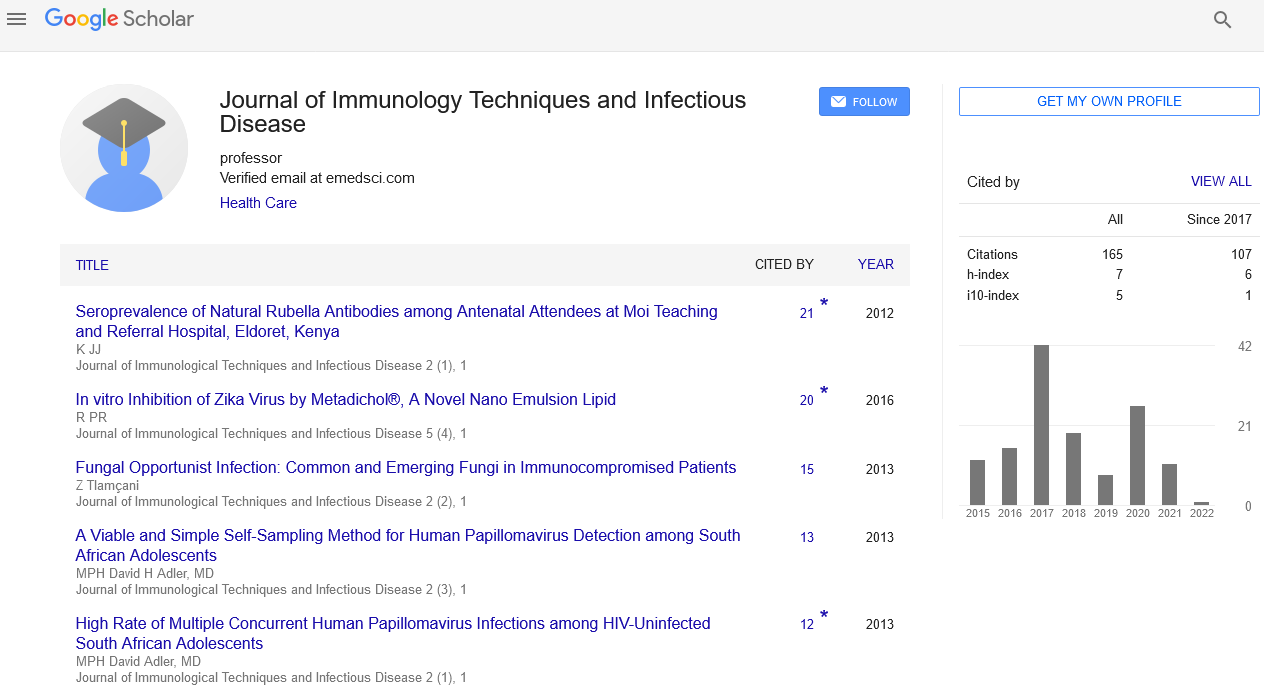The roles for AhR/Arnt signaling pathway and NS1A in alveolar epithelial cells in influenza virus A caused lung injury
Ilya B Tsyrlov
Xenotox Inc. USA
: J Immunol Tech Infect Dis
Abstract
The clinical course of influenza A and the extent of lung injury are determined by both viral and host factors, as well as exacerbations of underlying conditions. The balance between viral replication and the host immune responses is central to disease pathogenesis, and the extent of lung injury in influenza A infections may be due to inmate deficient responses. Severe respiratory disease leads to acute respiratory distress syndrome where viral replication occurs in epithelial cells (AECs) lining the alveolus. It was suggested that Influenza Non-Structural-1A binding protein (NS1A) in AECs plays a key role in viral maintenance by preventing transcriptional induction of antiviral interferons. On the other hand, NS1A physically interacts with the aryl hydrocarbon receptor (AhR) in a ligand-dependent manner. The AhR/Arnt is a dioxin-activated transcriptional factor that mediates the toxic effects of cytosolic dioxin-AhR ligand complex via a dimerization with its nuclear translocator, Arnt, resulting in binding of two dioxin response element (DRE) within regulatory regions of sensitive genes. Here, the SITECON, an established computational tool for transcriptional factor binding site recognition, was used to quantify potentially active DREs in promoter regions of genes encoding NS1A, AhR, and Arnt. It was shown that these genes possess, respectively, two, four and five potentially active DREs (core nucleotide sequence 3’A-CGCAC5’) in their enhancer area. Also, Western blot analysis of lysates of confluent human epithelial cells (line A549) pretreated with 10 ppt dioxin (2,3,7,8-TCDD) for 36 h revealed a 5.8- fold increase of NS1A-specific polypeptide. So, it was suggested that pulmonary concentration of dioxin up-regulating gene NS1A via AhR/Arnt signaling pathway should be slightly above current dioxin level in general human population (~4 ppt). Data obtained correspond to population epidemiologic studies in some regions of Vietnam, where elevated concentrations of bodily dioxin served as a promotional factor for lung injures during seasonal influenza A outbreaks.
 Spanish
Spanish  Chinese
Chinese  Russian
Russian  German
German  French
French  Japanese
Japanese  Portuguese
Portuguese  Hindi
Hindi 
